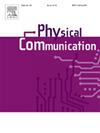WS-CACNN algorithm for robust adaptive beamforming
IF 2
4区 计算机科学
Q3 ENGINEERING, ELECTRICAL & ELECTRONIC
引用次数: 0
Abstract
The increased signal bandwidth and steering vector mismatch error lead to degradation of beamforming performance. Besides, the focusing transformation and convex optimization affect the real-time performance. To address aforementioned problems, this paper presents a channel attention atrous convolutional neural network (CACNN)-based wideband signal (WS) beamforming method to accurately and quickly predict the weight vector, named WS-CACNN. Firstly, the proposed CACNN introduces atrous convolutions to decrease the quantity of network parameters and extract the spatial feature information of the sample covariance matrix, which are achieved without adding more parameters by enlarging the receptive field. Secondly, a channel attention mechanism is introduced to extract important amplitude and phase information, thereby improving the prediction accuracy of the beamforming weight vector. Then, using the robust adaptive wideband beamforming weight vector as the training label, maximizing output signal-to-noise ratio is able to be achieved through training the proposed CACNN network. Finally, the sample covariance matrix is input of a well-trained CACNN model which outputs the near-optimal weight vector. The simulation results indicate that the WS-CACNN algorithm not only outputs near-optimal wideband beamforming weight vector but also achieves excellent real-time performance.
鲁棒自适应波束形成的WS-CACNN算法
信号带宽的增加和转向矢量失配误差导致波束形成性能的下降。此外,聚焦变换和凸优化对实时性能也有影响。针对上述问题,本文提出了一种基于信道关注卷积神经网络(CACNN)的宽带信号波束形成方法,用于准确、快速地预测权向量,并命名为WS-CACNN。首先,通过引入亚属性卷积来减少网络参数的数量,提取样本协方差矩阵的空间特征信息,在不增加更多参数的情况下,通过扩大接收场实现了这一目标;其次,引入信道注意机制提取重要的幅度和相位信息,从而提高波束形成权向量的预测精度;然后,使用鲁棒自适应宽带波束形成权向量作为训练标签,通过训练所提出的CACNN网络实现输出信噪比的最大化。最后,样本协方差矩阵作为训练良好的CACNN模型的输入,该模型输出接近最优的权向量。仿真结果表明,WS-CACNN算法不仅输出接近最优的宽带波束形成权向量,而且具有优异的实时性。
本文章由计算机程序翻译,如有差异,请以英文原文为准。
求助全文
约1分钟内获得全文
求助全文
来源期刊

Physical Communication
ENGINEERING, ELECTRICAL & ELECTRONICTELECO-TELECOMMUNICATIONS
CiteScore
5.00
自引率
9.10%
发文量
212
审稿时长
55 days
期刊介绍:
PHYCOM: Physical Communication is an international and archival journal providing complete coverage of all topics of interest to those involved in all aspects of physical layer communications. Theoretical research contributions presenting new techniques, concepts or analyses, applied contributions reporting on experiences and experiments, and tutorials are published.
Topics of interest include but are not limited to:
Physical layer issues of Wireless Local Area Networks, WiMAX, Wireless Mesh Networks, Sensor and Ad Hoc Networks, PCS Systems; Radio access protocols and algorithms for the physical layer; Spread Spectrum Communications; Channel Modeling; Detection and Estimation; Modulation and Coding; Multiplexing and Carrier Techniques; Broadband Wireless Communications; Wireless Personal Communications; Multi-user Detection; Signal Separation and Interference rejection: Multimedia Communications over Wireless; DSP Applications to Wireless Systems; Experimental and Prototype Results; Multiple Access Techniques; Space-time Processing; Synchronization Techniques; Error Control Techniques; Cryptography; Software Radios; Tracking; Resource Allocation and Inference Management; Multi-rate and Multi-carrier Communications; Cross layer Design and Optimization; Propagation and Channel Characterization; OFDM Systems; MIMO Systems; Ultra-Wideband Communications; Cognitive Radio System Architectures; Platforms and Hardware Implementations for the Support of Cognitive, Radio Systems; Cognitive Radio Resource Management and Dynamic Spectrum Sharing.
 求助内容:
求助内容: 应助结果提醒方式:
应助结果提醒方式:


